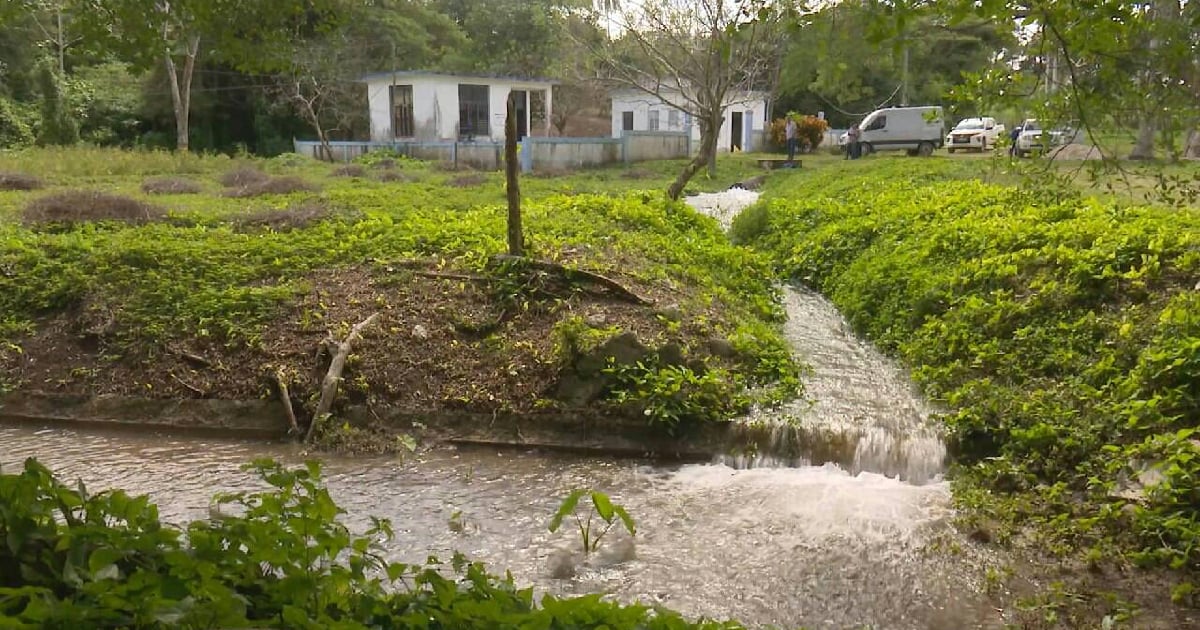Health officials are closely monitoring the water quality at the Bello supply source, a key provider of water to the city of Matanzas, following concerns about fecal contamination. This issue is believed to be linked to a spill of cachaza at the Boris Luis Santa Coloma sugar mill in Madruga, within the neighboring province of Mayabeque.
Microbiological tests and technical assessments are being conducted at the Bello aquifer field to evaluate the water quality. Authorities have assured that water from this source will not be distributed until it meets standards safe for human consumption, as reported by the state-run newspaper Girón on Sunday.
Last Wednesday, the Hydraulic Resources Department in Matanzas released a statement indicating that a cachaza spill had occurred days earlier at the Mayabeque sugar mill, impacting the water quality at the Bello supply source in Matanzas. Two days later, health authorities in Matanzas, based on an analysis by hygiene and epidemiology experts, raised alarms over the presence of fecal coliforms in the water body.
Dr. Andrés Lamas Acevedo, director of Hygiene and Epidemiology in Matanzas, informed the local press that this is not the first time Bello's water has been contaminated due to the sugar mill's waste. He emphasized the need for actions to mitigate the damage. A microbiological test of water from Bello revealed the presence of fecal coliforms, bacteria that can be neutralized by boiling or chlorinating the water, according to the report. Results from a new test are expected this Monday.
Antonio Hernández Martínez, the Hydraulic Resources delegate for Matanzas province, told the state-run Cuban News Agency (ACN) that the contaminated source is currently not supplying water to the Naranjal cistern. Instead, the resource is being sourced from La Julia and San Juan, and treated with chlorine as is standard practice.
The distribution center, which usually receives from Bello, supplies areas such as Naranjal, Matanzas East, Matanzas West, and Versalles, while other city regions rely on different systems. "Bello will not pump until quality parameters are suitable for public service," Hernández stressed. Dr. Lamas also reiterated that the water currently provided to the public is sourced from other aquifers, and "Bello's water will not be pumped until it is safe for human consumption," as noted by Girón.
Following the detection of water quality 'deterioration' at Bello, and due to power outages from electricity generation deficits affecting water pumping, authorities have decided to enhance supply through water trucks in areas typically served by the Naranjal distribution center. The report acknowledges that "it's not enough due to high demand," with vehicles from Mayabeque and Havana assisting in this effort.
A December article from the specialized magazine Juventud Técnica highlighted a scientific study indicating that "the groundwater under the Central 'Boris Luis Santa Coloma' in Madruga and those feeding into the Bello Springs in Matanzas, separated by 17 kilometers in a straight line, are interconnected by a system of caves, channels, and underground conduits due to the karstic nature of the Cuban territory and the region in particular."
While most coliform bacteria are harmless, they can include strains of Escherichia coli (E. coli), which signal fecal contamination and can lead to gastrointestinal issues, fever, and general discomfort. The contamination in Bello's wells poses a health risk, prompting recommendations for residents to boil water before use or rely on water distributed by tanker trucks.
FAQs about Water Contamination in Matanzas
What caused the water contamination in Matanzas?
The contamination is believed to be caused by a spill of cachaza from the Boris Luis Santa Coloma sugar mill in Madruga, which affected the water quality at the Bello supply source.
What are fecal coliforms, and why are they a concern?
Fecal coliforms are bacteria that can indicate contamination by fecal matter. They are concerning because they can include harmful strains like E. coli, which can cause gastrointestinal problems and other health issues.
How are authorities ensuring water safety in Matanzas?
Authorities are conducting microbiological tests and technical evaluations to ensure water safety. They have also stopped the distribution of water from the contaminated source until it meets safe consumption standards, and are providing water from alternate sources and tanker trucks.
